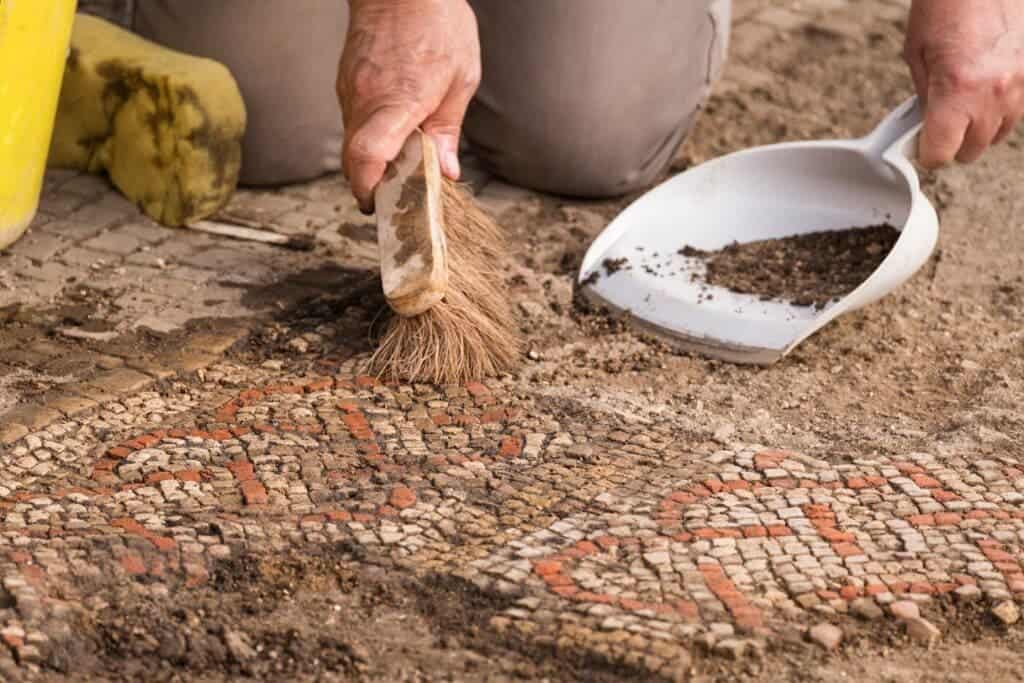A group of archeologists have found a Roman villa containing a mosaic that portrays scenes from Homer’s Iliad, the fight between Achilles and the Trojan hero, Hector. The mosaic dates back to the third or fourth century AD and it was first found by a farmer in Rutland, UK, who got in touch with researchers from the University of Leicester.

Historic England, the public body that looks after England’s historic artifacts, described the mosaic as “one of the most remarkable and significant ever found in Britain.” It’s so striking that it has been immediately designated as a “Scheduled Monument” — the highest designation a monument can receive in the UK.
It’s not just beautiful, but also important from a historical perspective.
“It gives us fresh perspectives on the attitudes of people at the time, their links to classical literature, and it also tells us an enormous amount about the individual who commissioned this piece,” John Thomas, project manager on the excavations, said in a press statement. This is someone with a knowledge of the classics, who had money.”
A remarkable finding
The mosaic measures 11 meters by almost seven meters and forms the floor of what’s believed to be a dining or entertaining room. Mosaics were common in public and private buildings in the Roman empire, depicting famous figures. However, only a few handfuls have been found in Europe depicting the battle between Achilles and Hector, and mosaics this elaborate and intricate could only be commissioned by someone rich and knowledgeable.
The room was part of a Roman villa building from the late Roman period, according to the archaeologists’ findings. The villa is also next to other buildings, such as aisled barns and possibly a bathhouse – all likely occupied by a wealthy individual. The site was re-used and re-purposed later on, based on breaks and fire damage in the mosaic.
“To have uncovered such a rare mosaic of this size, as well as a surrounding villa, is remarkable. Discoveries like this are so important in helping us piece together our shared history. By protecting this site we are able to continue learning from it, and look forward to future excavations,” Duncan Wilson, head of Historic England, said in a statement.
The archaeologists also found human remains within the debris covering the mosaic. The individuals were probably buried after the building was no longer In use, and while their exact age is unknown, the researchers estimate the structure was repurposed in the late Roman or early Medieval period – a period in history not well understood.
The villa was found within an arable field, where the remains had been disturbed by plowing and other activities — as it so often happens. Historic England will work with the landowner, Jim Irvine, for him to convert the fields to sustainable grassland and pasture use. These schemes are essential to protect historic and natural environments, they argue, while also offering some compensation for the landowners.
The discovery of the villa and the mosaic will be features as part of the Digging for Britain TV show on BBC in early 2022. In the meantime, evidence from the site will be analyzed by a team from the University of Leicester Archaeological Services (ULAS) and by specialists from Historic England, including the mosaic expert David Neal.
“A ramble through the fields with the family turned into an incredible discovery. Finding some unusual pottery amongst the wheat piqued my interest and prompted some further investigative work,” Jim Irvine, who initially discovered the remains, said in a statement. “Later, looking at satellite imagery, I sported a very clear crop mark.”









